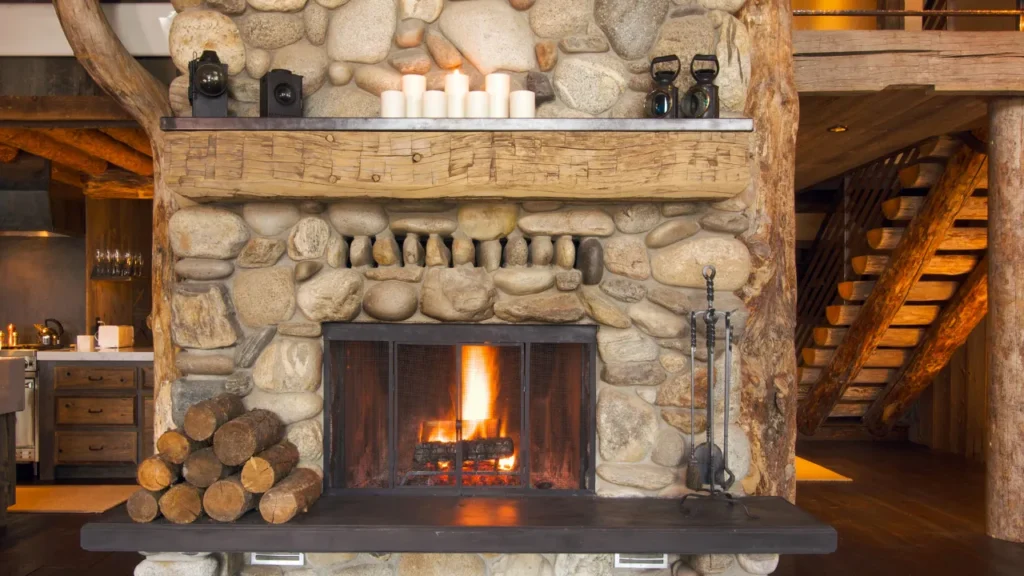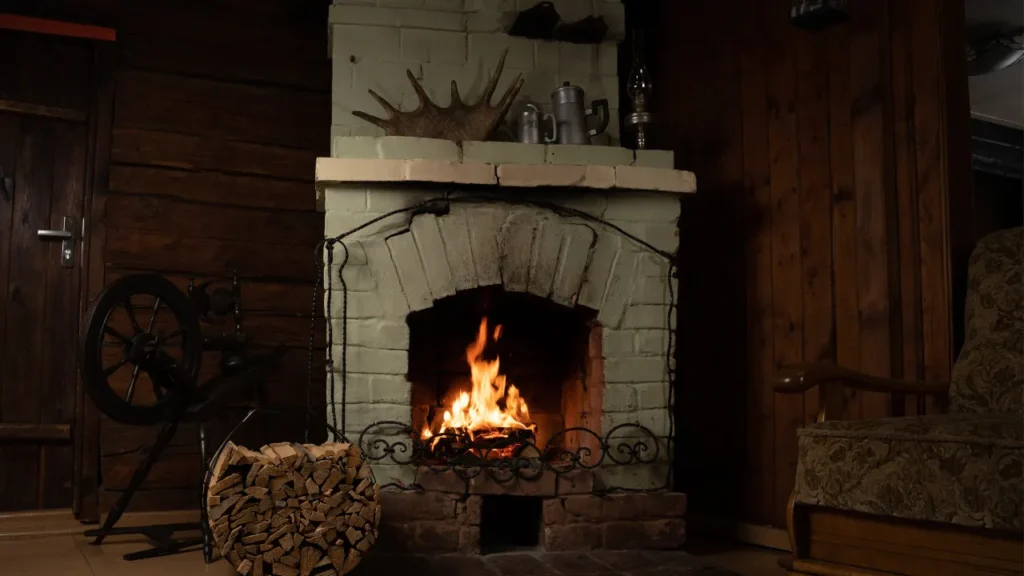If you’re diving into the world of fireplace renovations or installations, understanding the role and types of fireplace lintels is crucial. But what exactly is a fireplace lintel? And why should it matter to you?
Let’s explore the importance of this often-overlooked component.
What is a Fireplace Lintel?
A fireplace lintel is a horizontal support beam that spans the opening of a fireplace. Its primary role is to support the structure above the fireplace, ensuring stability and preventing any potential collapse.
Typically, it sits just above the firebox and beneath the mantle or surrounding wall.

Importance of a Fireplace Lintel
The fireplace lintel plays a critical role in maintaining the structural integrity of your fireplace. Without it, the weight of the wall above could lead to dangerous sagging or even collapse.
Additionally, a well-chosen and properly installed lintel enhances the overall aesthetic of your fireplace, ensuring both function and form.
Fireplace Lintel Installation Chart
| Component | Description | Typical Measurements |
|---|---|---|
| Fireplace Opening | Width and height of the fireplace opening | Width: 36-48 inches, Height: 30-40 inches |
| Lintel Width | Width of the lintel | 4-6 inches |
| Lintel Height | Height of the lintel | 2-3 inches |
| Lintel Depth | Depth of the lintel into the wall | 2-4 inches |
| Overhang (Front Projection) | Distance the lintel extends beyond the fireplace opening | 2-4 inches |
| Supporting Wall | Thickness of the wall supporting the lintel | 6-12 inches (depending on material) |
| Clearance Above Lintel | Space between the top of the lintel and the mantle | At least 6 inches |
| Load Bearing Capacity | Capacity to support the weight above | Minimum 500 pounds |
Types of Fireplace Lintels
When selecting a fireplace lintel, you’ll encounter various materials, each offering unique benefits. Here’s a quick rundown of the most common types:
Metal Lintels
Steel: Steel lintels are popular for their strength and durability. They are ideal for supporting heavier structures and are often used in modern fireplace designs. Steel lintels are also relatively easy to install and maintain.
Iron: Iron lintels, often cast iron, provide a classic and robust solution. They are known for their longevity and historical appeal, making them suitable for traditional fireplace styles.
Concrete Lintels
Concrete lintels are a solid choice for those seeking a balance between durability and cost. They can be customized to fit various sizes and shapes, making them versatile for different fireplace designs.
Stone Lintels
For a more natural look, stone lintels offer an elegant and timeless option. They blend seamlessly with stone fireplaces and provide a rugged, durable solution that complements rustic and traditional styles.
How to Choose the Right Fireplace Lintel.
To choose the ideal fireplace lintel, match your lintel choice with the overall style of your fireplace. Modern fireplaces often benefit from sleek metal lintels, while traditional designs might be better complemented by stone or cast iron.
Consider the weight and size of the structure your lintel will support. Heavier or larger fireplaces require more robust materials like steel or reinforced concrete.
Ultimately, your personal taste and the aesthetic of your home should guide your choice. Whether you prefer a classic stone look or a contemporary steel finish, ensure the lintel aligns with your vision.

Fireplace Lintel vs. Fireplace Surround
The fireplace lintel is a structural element, while the fireplace surround encompasses the entire area around the fireplace, including the mantle and decorative elements. Each serves a different purpose in both function and design.
Choose a lintel based on structural needs and select a surround that complements the style and aesthetic of your fireplace. Together, they create a cohesive look and ensure functionality.
Installation of Fireplace Lintels
-
Before installation, ensure that the area is clear and that you have the correct lintel size. Measure the opening carefully and check for any structural issues that need addressing.
-
The installation process typically involves placing the lintel in position, ensuring it’s level, and securing it with appropriate supports or fasteners. Professional installation may be required for complex setups.
-
Challenges during installation can include ensuring proper alignment, managing the weight of the lintel, and dealing with existing structural issues. Professional help can mitigate these challenges and ensure a successful installation.
Safety Considerations
Proper installation of your lintel is crucial for safety. Incorrect installation can lead to structural issues or potential hazards. Always follow guidelines or consult professionals.
Regular maintenance and inspections help prevent common issues like sagging or instability. Ensure your lintel is installed correctly and check it periodically for any signs of problems.
FAQs
What is the function of a fireplace lintel?
A fireplace lintel supports the structure above the fireplace, ensuring stability and preventing collapse.
How often should a fireplace lintel be inspected?
Inspect your fireplace lintel regularly, ideally once a year, to check for signs of damage or wear.
Can I replace a fireplace lintel myself?
While DIY replacement is possible, it’s often best to consult a professional to ensure proper installation and safety.
What materials are best for a fireplace lintel?
The best material depends on your fireplace style and structural needs. Common options include metal, concrete, and stone.
How can I improve the look of my fireplace lintel?
Consider adding a decorative surround or choosing a lintel material that complements your fireplace’s style for an enhanced appearance.
Affiliate Disclosure: Fireplaceadviser.com is a participant in the Amazon Services LLC Associates Program. We may earn a commission when you click on certain links on this site and purchase.

Hello!! I am Jamal Khan. I often fix my home electric heaters and gas stove problems and research the common issues in the heating units to improve my knowledge and expertise. The aim of establishing fireplaceadviser.com is to share my expertise and knowledge with my audience.












